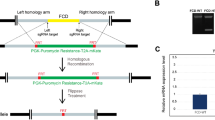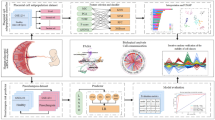Abstract
Sickle cell disease is one of the commonest genetic diseases and is defined as a decrease in hemoglobin concentration in the blood. The main known factor that can alleviate the disease is the persistence of fetal hemoglobin (HbF), and thus the aim of our research is to build a model to predict the HbF% of patients based on the three regulating genes of the disease (BCL11A, Xmm1-HBG2 and HBS1L-MYB). A machine learning approach is employed in order to improve the accuracy of the model, with various algorithms of that type being explored. In the end, the K-nearest neighbors algorithm is chosen and an initial version of it is implemented and tested. Finally, the algorithm is optimized enabling our optimized model to predict the HbF% of a patient with 87.25% accuracy, a major improvement over the existing alternative that has a mean error of 336.33%. Furthermore, 93.45% of our predictions have a sheer error that is less than 0.5, and all these facts reinforce the strength of our model as a quick and accurate estimation tool for small and medium-sized clinical trials, where fast HbF% predictions can help adjust for genetic background variability that obscures test outcomes.
Access this chapter
Tax calculation will be finalised at checkout
Purchases are for personal use only
Similar content being viewed by others
References
Platt OS, Brambilla DJ, Rosse WF, Milner PF, Castro O, Steinberg MH, Klug PP (1994) Mortality in sickle cell disease–life expectancy and risk factors for early death. N Engl J Med 330(23):1639–1644
Platt OS, Thorington BD, Brambilla DJ, Milner PF, Rosse WF, Vichinsky E, Kinney TR (1991) Pain in sickle cell disease: rates and risk factors. N Engl J Med 325(1):11–16
Paikari A, Sheehan VA (2018) Fetal haemoglobin induction in sickle cell disease. Br J Haematol 180(2):189–200
Adams R, McKie V, Nichols F, Carl E, Zhang DL, McKie K, Hess D (1992) The use of transcranial ultrasonography to predict stroke in sickle cell disease. N Engl J Med 326(9):605–610
Miller ST, Sleeper LA, Pegelow CH, Enos LE, Wang WC, Weiner SJ, Kinney TR (2000) Prediction of adverse outcomes in children with sickle cell disease. N Engl J Med 342(2):83–89
Steinberg MH (2005) Predicting clinical severity in sickle cell anaemia. Br J Haematol 129(4):465–481
Rees DC, Williams TN, Gladwin MT (2010) Sickle-cell disease. The Lancet 376(9757):2018–2031
Razak SAA, Murad NAA, Masra F, Chong DLS, Abdullah N, Jalil N, Aziz NA (2018) Genetic modifiers of fetal haemoglobin (HbF) and phenotypic severity in β-thalassemia patients. Curr Mol Med 18(5):295–305
Gil KM, Carson JW, Porter LS, Scipio C, Bediako SM, Orringer E (2004) Daily mood and stress predict pain, health care use, and work activity in African American adults with sickle-cell disease. Health Psychol 23(3):267
Bae HT, Baldwin CT, Sebastiani P, Telen MJ, Ashley-Koch A, Garrett M, Bhatnagar P (2012) Meta-analysis of 2040 sickle cell anemia patients: BCL11A and HBS1L-MYB are the major modifiers of HbF in African Americans. Blood 120(9):1961–1962
Makani J, Menzel S, Nkya S, Cox SE, Drasar E, Soka D, Fegan G (2011) Genetics of fetal hemoglobin in Tanzanian and British patients with sickle cell anemia. Blood 117(4):1390–1392
Darshana T, Bandara D, Nawarathne U, de Silva U, Costa Y, Pushpakumara K, Wijayawardena M (2020) Sickle cell disease in Sri Lanka: clinical and molecular basis and the unanswered questions about disease severity
Gardner K, Fulford T, Silver N, Rooks H, Angelis N, Allman M, Rees DC (2018) g(HbF): a genetic model of fetal hemoglobin in sickle cell disease. Blood Adv 2(3):235–239
Keller JM, Gray MR, Givens JA (1985) A fuzzy k-nearest neighbor algorithm. IEEE Trans Syst Man Cybern 4:580–585
Author information
Authors and Affiliations
Corresponding author
Editor information
Editors and Affiliations
Rights and permissions
Copyright information
© 2022 The Author(s), under exclusive license to Springer Nature Singapore Pte Ltd.
About this paper
Cite this paper
Oikonomou, K., Steinhöfel, K., Menzel, S. (2022). A Machine Learning Model for Predicting Fetal Hemoglobin Levels in Sickle Cell Disease Patients. In: Yang, XS., Sherratt, S., Dey, N., Joshi, A. (eds) Proceedings of Sixth International Congress on Information and Communication Technology. Lecture Notes in Networks and Systems, vol 235. Springer, Singapore. https://doi.org/10.1007/978-981-16-2377-6_10
Download citation
DOI: https://doi.org/10.1007/978-981-16-2377-6_10
Published:
Publisher Name: Springer, Singapore
Print ISBN: 978-981-16-2376-9
Online ISBN: 978-981-16-2377-6
eBook Packages: Intelligent Technologies and RoboticsIntelligent Technologies and Robotics (R0)




